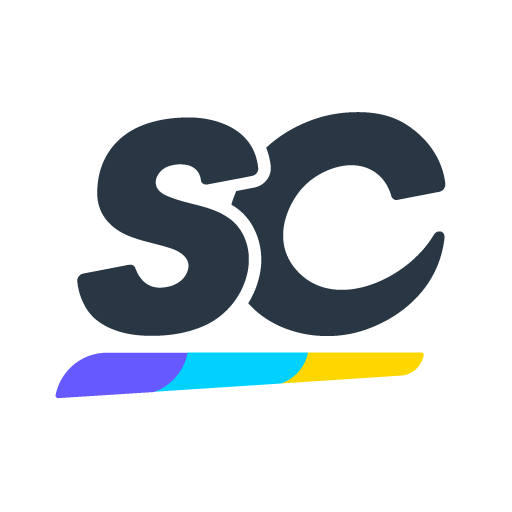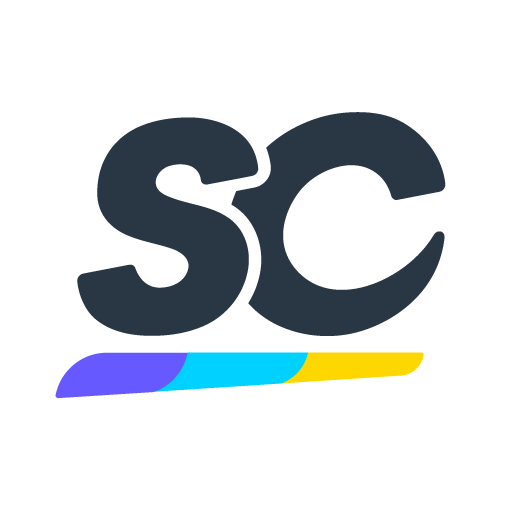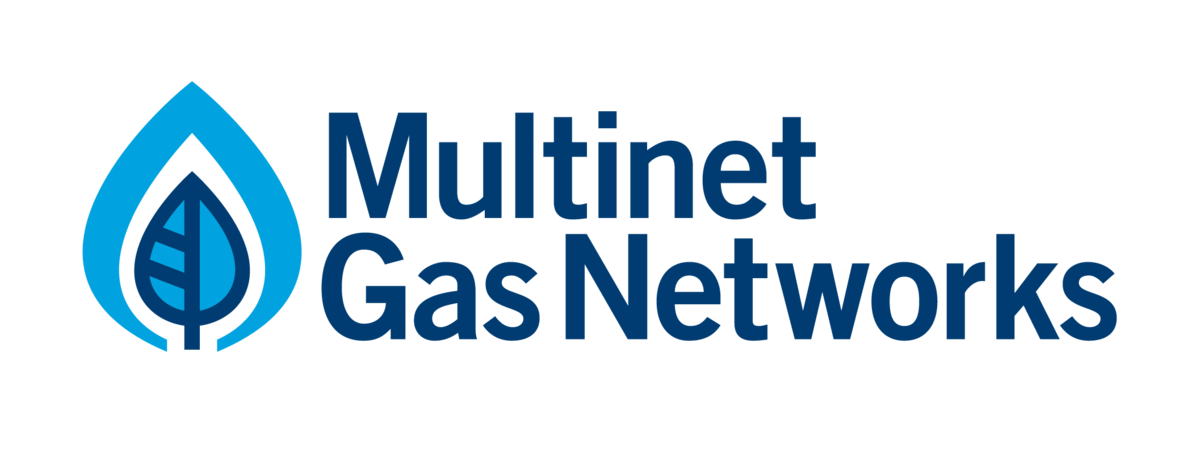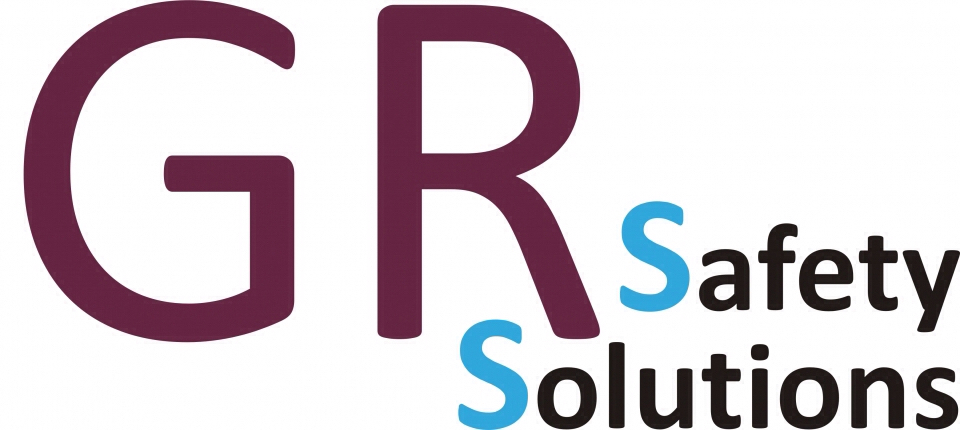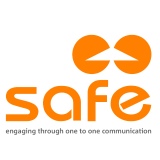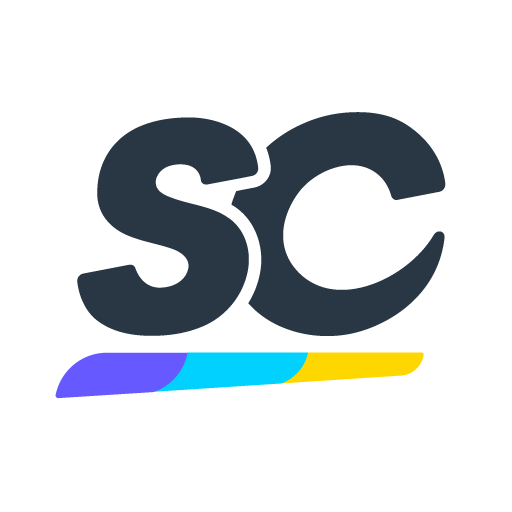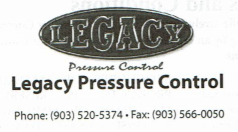Title Page
-
Site conducted
-
Conducted on
-
Prepared by
-
Location
-
C = Critical Question Pages (1-9) Apply to All Food Services
Pages (1-8) & (10-15) Apply to All Other Services
A. Management Commitment and Employee Rights
-
A1. Post: Are all required safety posters posted in a place that is readily visible to employees, clients, and contractors?<br>- OSHA "Job Safety & Health - It's the Law"<br>Poster<br>- Global Health & Safety Policy<br>- Safety Pledge<br>- Health & Safety objectives and targets<br>- Emergency Phone Numbers<br>- Fire Evacuation Diagram<br>- Choking First Aid Poster "Food Account<br>Only"<br>- Safety Committee Meeting Minutes<br>- Life Safety Hazard Poster<br>- Medical Provider Poster<br>- S.A.F.E (Sodexo Actions for Emergencies)<br>Cards<br>- Safe Lifting Poster<br>- 3 Checks for Safety Poster
-
A2. Is there documented evidence that disaster/emergency preparedness drill(s) have been conducted and communicated to all employees within the last year?
-
A3. Can a random employee show (with a phone number, email, office, or person) who to contact for reporting a serious, immediate hazard?
-
A4. Is a visitor sign in log being used and emergency evacuation information reviewed with all visitors?
-
A5. Can management access the Sodexo Safety Policy Manual within a reasonable time frame (15 minutes)?<br>In addition: California Accounts must have an IIPP (Injury and Illness Prevention Plan) onsite
-
A6. Is management aware of his/her safety responsibilities as per OSHA 3165 and the Safety Policy Manual?
-
A7. Does account manager have a safety improvement plan?
-
A8. Is a current OSHA 300 recordkeeping log, the privacy case list (if applicable), OSHA 300A summary, and the First Report of Injury maintained for 5 years following the end of the calendar year that each record covers or since account opened, if shorter time?<br>Post: If audited during February 1 – April 30, OSHA 300A summary is posted for all employees to view.
-
A9C. Can a random employee explain the 3 Checks for Safety process before starting a job?
-
A10C. Can management explain the 7 Sodexo Safety Nets?
B. Chemical Hazard Communication and Alignment with the UN's Globally Harmonized System of Classification and Labeling of Chemicals
-
B1. Chemical safety in the workplace. Does management maintain an inventory list of hazardous chemicals that is dated within last 12 months, and is accurate?
-
B2. Are Safety Data Sheets (SDS) readily available for each hazardous chemical in the workplace?
-
B3. Are chemical containers appropriately labeled?
C. Communicating Safety & Health
-
C1. Does a safety committee meet monthly? Is there an established Safety Committee complete with documented meeting minutes for the last six months? (Applies to accounts with 10 or more employees)
-
C2. Is account completing Safety Walks or Observations?
-
C3. Are Weekly Safety Messages communicated to employees?
-
C4. Does the management team review a workplace safety topic each month with all employees (includes management) for the past 12 months? Documentation required.<br>NOTE: THIS IS NOT FOOD SAFETY TRAINING
D. Hazard Identification and Control
-
D1C. SAFETY INSPECTION: Account conducts Monthly Safety Inspection with corrective action plan implemented to abate unsafe conditions or unsafe acts?
-
D2C. Does account conduct a documented risk assessment and review with employees?
-
D3. Are all restrooms that Sodexo maintains clean and sanitary?
-
D4. Compressed gas cylinders stored in upright position, chained or secured and those not in use have protective caps in place?
-
D5. All electrical cords and plugs in good condition- such as loose parts, deformed and missing<br>ground pin, or damage to outer jacket or insulation?
-
D6. Extension cords are not used in place of permanently installed fixed wiring?
-
D7. Electrical panels have minimum 36” of unobstructed workspace in front and are closed?
-
D8. Trash compactors, balers, or similar mechanical machines are equipped with adequate guards and safety switches? <br>Signage on machine states: ONLY AUTHORIZED PERSONNEL SHOULD BE ALLOWED TO OPERATE OR SERVICE THIS COMPACTOR or similar signage.
-
D9. Does compactor, balers, or similar devices have controls in place to prevent unauthorized Sodexo Managed employees from operating?
-
D10. Post: No Smoking signs posted on liquefied petroleum (LP) tanks. No LP gas cylinders used or stored indoors, and LP gas cylinders are guarded to prevent damage from vehicles?
E. Slip and Fall Prevention
-
E1C. All work areas and walkways are free of slip hazards. - Such as wet/oily surfaces and spills?
-
E2C. All work areas and walkways are free of trip hazards. - Such as boxes (or similar items) on the floor, poor lighting, wrinkled carpets, mats or clutter?
-
E3. Are the correct ladders and step stools being used for safe climbing, rated for the weight of the employee, and the load they intend to carry?
-
E4. Are ladders and step stools in good condition and of sufficient height to prevent overreaching?
-
E5. Employees not observed carrying materials that obstruct their vision while traveling up or down stairs? Employees use handrail while traveling up or down stairs?
-
E6. Does every flight of stairs (portable or fixed) having 4 or more risers and all winding stairs must be equipped with standard stair railings or standard handrails?
-
E7. Does accounts management actively use approved floor hazard warning signs to prevent access to areas that expose potential dangers (such as spills, damaged floors)?
-
E8. Do Sodexo employees wear closed toe, closed top, closed heel, and rubber sole, slip resistant footwear?
-
E9. Are standard guardrails provided wherever aisle or walkway surfaces are elevated 48 inches or more above any adjacent floor or the ground?
-
E10. Employee parking lot and walkway leading into the workplace have adequate lighting and is free from slipping or fall hazards (this includes walkways free of snow and ice)
-
E11. Does account management have an inclement weather procedure in place to protect employees from exposure?
F. Safe Material Handling
-
F1. Are carts or other mechanical aids used to transport heavy items or hot liquids and are they in proper working condition?
-
F2. Employees observed pushing a load instead of pulling it?
-
F3C. Proper body mechanics observed when any lifting takes place and a team lift is utilized for loads over 40lbs?
-
F4. Storage room safety check - Shelves and racks are of adequate strength and are stable? Products are stored properly, stable, and not overhanging on shelves?
G. Personal Protective Equipment (PPE)
-
G1. Is a Personal Protective Equipment Hazard Assessment completed and reviewed annually and signed by on-site management?
-
G2C. Is Personal Protective Equipment (PPE) provided and actively worn?
-
G3. Evidence of properly maintained (clean) PPE in use?
H. Ensuring Zero Energy
-
H1C. LOCK, TAG, TRY. Are equipment specific procedures developed and implemented for equipment that contains stored hazardous energy?
-
H2C. Are authorized employees provided at least one lock and/or one tag?
-
H3C. At the time of audit, is account management supporting company LOCK/TAG/TRY procedures?
-
H4C. Are periodic inspections completed annually to confirm energy control procedures are in place?
I. Protecting Sodexo Property / Life Safety
-
I1. Exits and exit accesses are being located and arranged so that they are readily accessible at all times.
-
I2. Portable fire extinguishers are maintained, fully charged, operating properly, and kept in designated places at all times except during use.
J. Required Annual Safety Training
-
J1. Is the Accident Prevention Review Video and Form reviewed with new employees?
-
J2. Is the Accident Prevention Review Video and Form reviewed with all employees annually?
-
J3. Has General Manager or other accounts Managers successfully completed 10-Hour OSHA General Industry Training Course?
-
J4C. Is Slip, Trip, and Fall Prevention Training provided? (29 CFR 1910.24-.27)
-
J5C. Is Back Injury Prevention Training provided? 5.00
-
J6. Is Fire Safety, Fire Extinguisher, & Emergency Evacuation Training provided? (29 CFR 1910.38)
-
J7. Is Personal Protective Equipment Training provided? (29 CFR 1910.132 & .133)
-
J8C. Is Lock/Tag/Try Training provided for all authorized and affected employees? (29 CFR 1910.147)
-
J9. If applicable, is Power Industrial Truck Training provided for all authorized operator(s)? (29 CFR 1910.178)
-
J10. Is Chemical Hazard Communication Training provided at orientation, annually to all employees, or when new chemicals are introduced? (29 CFR 1910.1200)
-
J11. Is Blood Borne Pathogen Precautions Training provided to employees with occupational exposure? (29 CFR 1910.1030) Applies to Healthcare & First Aid Trained Staff
-
J12. Is Equipment Training provided on all equipment employees are expected to use?
-
J13. Is Workplace Violence and Aggression Training provided?
-
J14. Is Heat Stress Prevention Training provided? 0.50
-
J15. Contractors Working in Sodexo Areas (i.e. Temp Labor): For accounts with contractors on site, have pre-job orientations have been completed?
Inspection Continued
K. Fleet/Vehicle Safety
-
K1. Vehicle Safety: Applies to All Sodexo Drivers who operate client or Sodexo owned or leased vehicles in the conduct of their business. Is the Driver Responsibilities form reviewed and signed by all Sodexo drivers within the last 12 months?
-
K2. Vehicle Safety: Does the account manager retain a copy of the current motor vehicle record check for all Sodexo drivers within the last 12 months?
-
K3. Vehicle Safety: Does account complete monthly vehicle inspections for those client or Sodexo owned or leased vehicles used in daily operations?
-
K4. Vehicle Safety: All Sodexo drivers have completed Drivers Safety Training videos?
-
K5. Golf Cart Safety: All drivers must have a valid Drivers' License and receive the following training: operator training, golf cart safety procedures, battery recharging, distracted driving, and refueling safety procedures?
L. Injury/Illness Reporting, SALUS Root Cause Analysis and Investigation, and First Aid
-
L1. Does account management complete the First Report of Injury on all Sodexo employee incidents, accidents and notifies the Sodexo Reporting Hotline 1-888-872-5676 no later than 24 hours of occurrence?
-
L2. Does account management complete a root cause analysis that includes: (Safety Nets on Events tab, Investigation tab, Cause tab and Action plan tab) on all incidents and accidents and this information is completed in Salus?
-
L3. Does the account management team offer immediate Return To Work to injured Sodexo employees?
-
L4. Is a First Aid Kit(s) easily accessible to the work area? (29 CFR 1910.151)
-
L5. Is a First Aid/CPR trained and certified employee(s) available? (29 CFR 1910.151)
-
L6. Is an Emergency eye wash station available and operating properly within the immediate work area where employees are exposed to corrosive materials? (29 CFR 1910.151)
HC. Healthcare Specific
-
HC1. Healthcare Wide Hazards - Applies to Healthcare Segments: Are employees with occupational exposures to blood borne pathogens or bodily fluids offered Hepatitis B vaccinations? (29 CFR 1910.1030)
-
HC2. Healthcare Wide Hazards - Applies to Healthcare Segments: Are employees working in potential close contact of infectious TB offered the purified protein derivative (PPD) Mantoux Skin Test?
-
HC3. Healthcare Wide Hazards - Applies to Healthcare Segments: Is Tuberculosis Precautions Training provided to employees with occupational exposure?
-
FS1. Is the slicer unplugged and set to zero or in a closed position when not in use?
-
FS2. Is hot oil handled safely? 1.00
-
FS3. Are safe knife handling procedures in place and used?
-
FS4. Are walk-in freezer/cooler floors free of ice? 2.00
-
FS5. Do accounts that perform kitchen floor cleaning use Wash'n Walk as its daily floor cleaner complete with deck brushing or Dual Tool?
-
FS6. The floor surface area around the fat disposal container(s) (i.e. drum) is kept in clean condition?
-
FS7. Is safe access and egress provided in kitchens and frequently traveled corridors?
-
FS8. Is the automatic fire protection system for the commercial kitchen hood(s) inspected and serviced by qualified person(s) and service inspection tag current within the last 12 months?
-
FS9. Is commercial kitchen hood(s) and filter(s) clean and free of grease accumulation?
-
FS10. Does the dish room and commercial kitchen hoods ventilation system work and operate efficiently?
-
FS11. If applicable, does account management ensure alcohol responsibility training and liquor license checks when serving and/or selling alcohol?
-
FS12. In wet or damp locations, are outlets protected by GFCI (ground fault circuit interrupter)?
-
FS13. Is Knife Safety Training provided to those employees using knives? (OSHA's General Duty Clause)
-
FS14. Is Burn Prevention Training provided?
FM. Facilities Management Specific
-
FM1. ELECTRICAL: Is Electrical Safety Training provided? (29 CFR 1910.303) *Not applicable to Patient Transport and Environmental services.
-
FM2. ELECTRICAL: In wet or damp locations, are portable electrical tools and equipment UL rated and protected by GFCI? *Not applicable to Patient Transport.
-
FM3. ELECTRICAL: If applicable, are all energized parts of electrical circuits and equipment guarded against accidental contact by approved cabinets or enclosures? *Not applicable to CTM.
-
FM4. ELECTRICAL: If applicable, are all disconnecting switches and circuit breakers labeled to indicate their use or equipment served? *Not applicable to CTM.
-
FM5. ASBESTOS: If asbestos or presumed asbestos containing materials (ACM) are present, does Sodexo management maintain a copy of client ACM management plan and are locations identified with signage? *Not applicable to Patient Transport and CTM.
-
FM6C. ASBESTOS: Are Sodexo personnel or Sodexo managed personnel that may be required to conduct work on Asbestos Containing Materials (Class III and/or IV Asbestos Work) trained and certified in an EPA Approved 16-Hour asbestos operations and maintenance course? *Not applicable to Patient Transport, Laundry services and CTM.
-
FM7. ASBESTOS: Is Asbestos Awareness Training provided? (29CFR1910.1001) *Not applicable to Environmental Services, Patient Transport and Laundry services.
-
FM8C. Is a Permit to Work form used and issued to the General Manager before work can proceed on any of the situations requiring a permit to work? *Not applicable to Patient Transport and Environmental Services.
-
FM9. CONFINED SPACE: Are all permit-required and non-permit required confined spaces identified, inventoried and properly classified (i.e. tunnel washer)? NOTE: A sign reading DANGER -- PERMITREQUIRED CONFINED SPACE, DO NOT ENTER or using other similar language that would satisfy the requirement for a sign. *Not applicable to Environmental Services, Patient Transport and CTM.
-
FM10C. CONFINED SPACE: If applicable, are affected Confined Space entrants and attendants trained upon initial job assignment and prior to entry? (29 CFR 1910.146). *Not applicable to Environmental Services, Patient Transport, and CTM.
-
FM11. Are the working/shop areas clean and orderly with sufficient lighting? *Not applicable to Patient Transport.
-
FM12. Are fall protection requirements implemented when working at heights of 48" or higher above a lower level? *Not applicable to Patient Transport, Laundry Services and CTM.
-
FM13. If aerial lifts or cranes are used, then equipment must be inspected prior to use and only operated by a trained employee. Are inspections documented and is there evidence that operators are trained? *Not applicable to Patient Transport, Laundry Services and CTM.
-
FM14. Power Industrial Trucks: Is a pre-inspection performed on all powered industrial trucks (forklifts)? *Not applicable to Patient Transport and CTM.
-
Machine Guarding & Hand Tools (Mark N/A if Environmental Services, Patient Transport or Laundry Services.)
-
FM15C. Are correct safety guards in place and properly installed for equipment with rotating or moving parts (belts, fans, saw blades)?
-
For grinders, do side guards cover the spindle, nut, flange and 75 percent of the wheel diameter?
-
Is a work rest used and kept adjusted within 1/8 inch of the grinding wheel?
-
Machine Guarding (Mark N/A if Environmental Services or Patient Transport.)
-
FM16. Are emergency stop controls provided, or are circuit breakers controlling machines clearly marked and accessible?
-
FM17. Tools and equipment used by employees are in safe working condition and used for their intended use?
-
FM18. Employees do not wear loose fitting clothing and jewelry and tie back long hair while operating equipment or when near moving equipment? *Not applicable to Environmental Services and Patient Transport.
-
FM19. HAZARD ENVIRONMENT: Is there a job task that requires a respiratory protection program or do employees voluntarily wear respirators?
-
Is a respiratory protection program established and fit testing conducted where employees are exposed to air contaminants and required to wear respirators?
-
FM20. NOISE: Are high noise work areas identified and controls taken?<br>There must be a Hearing Conservation Program for areas where noise exposure exceeds action level of 85 Dba @ 8- hour time weighted average? (29 CFR 1910.95)
-
FM21. NOISE: If applicable, are employees in high noise areas involved in the Hearing Conservation Program, including annual audiometric testing?
-
FM22. NOISE: If applicable, is approved hearing protective equipment (noise attenuating devices) available to every employee working in noisy areas (e.g. boiler room, wood planer, lawn mowing, plasma arc welding, and laundry facility)?
-
FM23. Are oily rags and combustible wastes kept in metal containers with lids? *Not applicable to Environmental Services, Patient Transport, Laundry Services and CTM.
-
FM24. Are flammable liquids (e.g. gasoline) stored in safety cans or inflammable cabinets? *Not applicable to Environmental Services, Patient Transport, Laundry Services and CTM.
-
FM25. If applicable, no evidence of smoking in same room as oxygen systems, and no open flames (gas stoves, heat, candles, etc.) within 6 feet of oxygen system?
-
FM26. Are all gas cylinders clearly labeled and protective caps in place over the valves of all gas cylinders which are not in use? *Not applicable to Environmental Services, Patient Transport and Laundry Services.
-
FM27. Where applicable, are sharp/needle container(s) available and in close proximity to areas where needles may be found (i.e. Soil sort area, healthcare facilities, and restrooms)? *Not applicable to CTM Accounts.
PT. Patient Transport Specific
-
PT1. Hallway mirrors are used during transport of patients? In the absence of hallway mirrors, is a process in place to ensure safety is maintained during transport? *Applies to Patient Transport only.
-
PT2. Aisles and passageways are wide enough for easy movement and kept clear at all times. *Applies to Patient Transport only.
-
PT3. Are stretchers/wheelchairs pushed, not pulled, and maintained in good condition? *Applies to Patient Transport only.
-
PT4. When lifting equipment is not being used, are safe lifting practices followed for patient transfers? *Applies to Patient Transport only.
-
PT5. Are two patient identifiers checked before transport of every patient and a handoff communication document completed and transferred with every patient who is transported? *Applies to Patient Transport only.
-
PT6. Are brakes locked on transport equipment in storage and prior to transferring a patient? *Applies to Patient Transport only.
-
PT7. Is the following training provided to all patient transporters: Diagnostic Imaging Safety Training, Equipment Safety, Care and Cleaning Training, and Hand Hygiene & Infection Control Training? *Applies to Patient Transport only.
-
PT8. Are emergency scenarios during transport reviewed: various codes, combative patients, etc.? *Applies to Patient Transport only
CTM. Clinical Technology Management Specific
-
CTM1. New employee’s complete mandatory safety training as outlined in CEM.021 within 30 days of employment and annually for all CTM employees. *Applies to CTM Accounts only.
-
CTM2. All Imaging Service Engineers (ISEs) on-site have completed radiation safety training with the past 12 months. *Applies to CTM Accounts only.
-
CTM3. All Imaging Service Engineers (ISEs) on-site have a personally assigned dosimetry badge that they wear while servicing radiation producing equipment. *Applies to CTM Accounts only.
-
CTM4. All Imaging Service Engineers (ISEs) on-site have been registered with the state to service radiation producing equipment. *Applies to CTM Accounts only
-
CTM5. Verify through personal interview and documented evidence that there have been no lost workdays due to a job-related injury this fiscal year. *Applies to CTM Accounts only.
-
CTM6. Verify through personal interview that Sodexo CTM staff is aware of roles and responsibilities during facility emergency code situations. *Applies to CTM Accounts only.
-
CTM7. No food or beverages are being consumed in designated work areas. *Applies to CTM Accounts only.
Sign Off
-
Meets Standards: 100%
Progressing: 90 – 99.9%
Below Standards: 89.9% or lower -
A Corrective Action Plan online must be completed
for any missed questions listed on the corrective
action plan. -
Completed by (Name and Signature)






